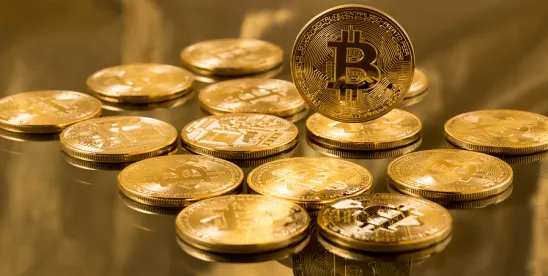When people hear the word "memecoin," the image that comes to mind is often one of volatility, memes, and momentum-driven speculation. But as the web3 space matures and regulatory scrutiny intensifies, it's becoming clear that memecoins can no longer rely solely on internet culture to survive. They must start thinking like brands, and more importantly, they must protect those brands through sophisticated intellectual property strategies.
As legal counsel who has worked extensively in the web3 space, I've witnessed firsthand how the absence of proper intellectual property frameworks has created both unprecedented opportunities and existential risks for memecoin projects. The recent memecoin boom has shown us what happens when projects launch without accountability: celebrity-backed tokens implode within days, anonymous founders vanish after rug pulls, and imitators exploit popular imagery with no consequence.
In this chaotic landscape, brand legitimacy matters more than ever. Unauthorized use of cultural icons doesn't just pose legal risk, it erodes community trust and undermines the credibility of projects that aim to build long-term value. This is why the recent intellectual property acquisition by Neiro represents such a watershed moment for the industry.
The Neiro Precedent: Making Legal History in Web3
Recently, I had the privilege of serving as legal counsel for Neiro in what became a groundbreaking transaction: the first known instance of a memecoin formalizing its legitimacy through licensed intellectual property rights. This wasn't just a business deal, it was a proof of concept that decentralized, community-led projects could successfully navigate complex IP negotiations while maintaining their grassroots character.
Neiro’s story begins with one of the most iconic images in internet history. The original Doge meme, which helped ignite the memecoin phenomenon, features Kabosu, a Shiba Inu dog adopted by Japanese kindergarten teacher Atsuko Sato. After Kabosu’s passing, Sato adopted a second Shiba Inu, named Neiro.
In 2024, a community formed around Neiro’s image, recognising the cultural significance of this lineage, and launched a memecoin project rooted in the same spirit of positivity and decentralisation that defined Dogecoin. In 2025, the project became the first memecoin to acquire the exclusive intellectual property rights to its name and likeness, licensed directly from Atsuko Sato. This marked a pivotal moment for the space, establishing a new standard for legitimacy, transparency, and IP accountability in web3.
The negotiation process required careful attention to both legal requirements and cultural sensitivities. We were dealing with intellectual property that had deep emotional significance for its owner, while establishing frameworks that could accommodate decentralized governance structures. The successful completion of this licensing agreement marked a significant milestone for the entire memecoin ecosystem.
Why an Intellectual Property Strategy Is No Longer Optional
The decentralized nature of blockchain technology, while revolutionary, has created fertile ground for intellectual property violations. The memecoin space has been particularly vulnerable, with countless projects launching using unauthorized images, characters, and cultural references without considering legal implications.
This regulatory vacuum has created critical problems threatening the sector's long-term viability. Celebrity-endorsed memecoins collapse within days, leaving investors with worthless tokens. Anonymous founders execute rug pulls with no legal recourse. Most pervasively, copycat projects exploit the goodwill associated with successful memecoins, creating confusion and diluting brand value.
As regulatory authorities worldwide intensify their focus on digital asset compliance, these issues have become existential threats. The EU's Markets in Crypto-Assets Regulation (MiCA), the SEC's increasing enforcement actions, and similar frameworks emerging globally all emphasize the importance of proper legal structures for cryptocurrency projects.
In my practice, I've observed that memecoins without legitimate intellectual property frameworks face mounting legal risks that could result in cease-and-desist orders, trademark infringement lawsuits, or regulatory enforcement actions. More importantly, the absence of proper brand protection makes it nearly impossible to build the institutional relationships necessary for sustained growth.
The Strategic Framework: Balancing Decentralization with Legal Compliance
One of the most challenging aspects of my work involves helping projects balance their decentralized, community-driven origins with formal legal structures necessary to operate in regulated markets. This challenge is particularly acute for memecoins, whose value propositions often depend heavily on cultural cachet and community sentiment.
Effective intellectual property strategy requires addressing several interconnected considerations. Projects must secure legitimate rights to the cultural references, images, or characters that form their brand foundation. This often involves negotiating with content creators or rights holders who may have never considered the commercial implications of their intellectual property in a cryptocurrency context.
In the Neiro transaction, this meant working closely with Atsuko Sato to ensure she understood both the potential value and responsibilities associated with licensing her dog's image and name. We had to explain how memecoin communities operate, what rights the license would grant, and how the agreement would be enforced across multiple jurisdictions and platforms.
Beyond securing initial rights, projects must develop comprehensive trademark and brand protection strategies, including registering trademarks in relevant categories, monitoring for unauthorized use, and establishing clear guidelines for community-created content.
Practical Benefits of Formal Brand Protection
Since completing the Neiro licensing agreement, I've observed how formal intellectual property protection translates into practical benefits for memecoin communities. The project has leveraged its licensed rights to initiate trademark registration processes and request that exchanges delist unauthorized copycat tokens.
These enforcement actions serve multiple purposes beyond protecting Neiro's specific interests. By taking decisive action against imposter tokens, the project helps reduce fraud and confusion in the broader market. This protection extends to investors who might otherwise purchase unauthorized tokens believing they're investing in the legitimate project.
The precedent has provided a roadmap for other projects seeking similar protections. In my subsequent work with memecoin clients, I've been able to reference the Neiro model as proof that community-led tokens can successfully enter into enforceable IP agreements without compromising their fundamental governance structures.
This development has particular significance for projects that have achieved substantial market capitalization but lack formal IP protections. As institutional investors become more active in the memecoin space, projects with legitimate brand protection frameworks are gaining competitive advantages in accessing exchange listings and partnership opportunities.
Strategic Recommendations for Memecoin Projects
Based on my experience with the groundbreaking Neiro transaction, I recommend that memecoin projects take several critical steps to establish proper intellectual property protection.
First, conduct comprehensive IP audits to identify all brand elements requiring protection or licensing. This process often reveals vulnerabilities that project teams haven't previously considered, from unauthorized use of pop culture references to potential trademark conflicts with existing brands.
Second, prioritize securing legitimate rights to core brand elements through direct licensing agreements or original creation. This process requires engaging with content creators or rights holders who may need education about the memecoin ecosystem. In my experience, these conversations often prove more productive than projects initially expect.
Third, pursue strategic trademark registration across relevant jurisdictions and categories. The trademark application process provides opportunities to establish clear brand guidelines and usage policies that prevent unauthorized exploitation while respecting community values.
Fourth, develop enforcement mechanisms that provide effective protection while maintaining proportionality. This balanced approach helps preserve community relationships while demonstrating serious commitment to brand protection.
Finally, ensure that IP protection efforts align with decentralized governance structures. This includes establishing clear policies for community-created content and derivative works that respect both legal requirements and community expectations.
The Path Forward and Call to Action
The intellectual property landscape for memecoins will continue evolving as regulatory frameworks mature and institutional participation increases. Projects that establish comprehensive brand protection strategies today will likely benefit from first-mover advantages in accessing regulated markets.
The Neiro licensing agreement represents more than an isolated business transaction, it demonstrates a viable pathway for memecoin projects to establish the legal foundations necessary for long-term sustainability. As someone who helped facilitate this groundbreaking deal, I can attest to both its complexity and its importance for the broader industry.
Memecoins are cultural products, and like any successful cultural product, they require strong legal frameworks to protect their value and integrity. The Wild West days of launching projects without consideration for intellectual property rights are coming to an end, whether the industry likes it or not.
As regulators globally focus on digital asset compliance, licensing, trademarks, and enforceable brand rights will not be optional, they will be necessary for survival. The projects that recognize this reality and act accordingly will be the ones that thrive in the regulated environment that's rapidly approaching.
Conclusion
The transformation from meme-driven speculation to brand-focused sustainability represents a fundamental evolution in how digital communities can protect their cultural assets while building long-term value. The intellectual property acquisition by Neiro, which I was privileged to facilitate, has established a new standard for memecoin legitimacy and opened pathways for other projects to follow.
The future of the memecoin space will belong to projects that understand branding as more than marketing, it's a fundamental component of sustainable business strategy in the digital economy. The journey from meme to brand is both an opportunity and an imperative. Neiro has taken the first step, demonstrating that community-led projects can successfully navigate complex legal frameworks while maintaining their grassroots character.
The stakes are too high, and the regulatory environment too complex, for memecoin projects to continue operating without proper intellectual property protection. The tools and precedents now exist to establish legitimate brand frameworks. The question is no longer whether memecoins should think like brands—it's which projects will be smart enough to make that transition before it's too late.



 />i
/>i
